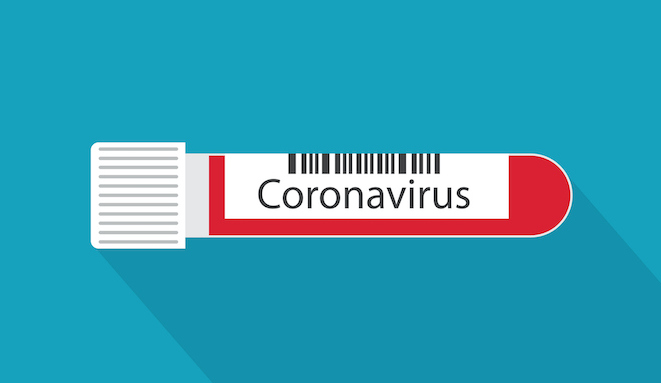Nearly a Fifth of Primary Care Practices Are Temporarily Closed
Meanwhile, a majority of primary care practices have reduced working hours for all staffing types, with 42% reporting layoffs and furloughs of clinicians and staff, a new survey shows.

Source: Getty Images
- Primary care practices continue to be under extreme financial stress as a result of the coronavirus pandemic, the latest survey from the Primary Care Collaborative and the Larry A. Green Center showed.
For more coronavirus updates, visit our resource page, updated twice daily by Xtelligent Healthcare Media.
Over 500 of the more than 2,750 primary care clinicians responding to the Week 9 survey said their practice has temporarily closed as a result of the coronavirus, representing nearly a fifth of all respondents. Another 18 respondents (0.6 percent) reported their practice has permanently closed.
Both of these numbers are likely to rise. About 13 percent of respondents predicted closure within the next month, as 57 percent of primary care clinicians stated that payments are less than enough to cover the costs of care delivered. Additionally, 51 percent said they were uncertain about their financial future next month.
Moreover, a majority of practices have reduced working hours for all staffing types, including 72 percent of clinicians, 65 percent of nurses, and 58 percent of administrative staff. A consistent number (42 percent) also continue to report layoffs and furloughs of clinicians and staff.
READ MORE: How COVID-19 Imperiled Physician Practices, And How to Save Them
“Patients are relying on primary care for advice and assistance during COVID-19, but without immediate financial support, primary care might not be there when patients need help,” said Ann Greiner, president and CEO of the Primary Care Collaborative. “The next stimulus package must directly channel more relief to primary care practices now so that they can continue helping their patients through this pandemic. The package must also address ongoing prevention, chronic care management and behavioral health needs.”
Previous coronavirus stimulus packages have funneled billions of dollars to healthcare providers, including $175 billion in grants through the Provider Relief Fund and opportunities for small business loans.
However, this money is just reaching primary care practices, the survey indicated.
Just over a fifth of respondents said they received support from the Provider Relief Fund over the last four weeks. The survey did not address how much respondents received from the fund, but HHS has distributed a portion of the grants based on Medicare billings and net patient revenue, meaning larger organizations that earn more private payer revenue received greater grants.
Industry stakeholders, including primary care clinicians responding to the survey, have criticized HHS’ methodology for distributing money from the Provider Relief Fund, saying the formula disadvantages providers who treat higher proportions of Medicaid patients and children.
READ MORE: Healthcare Organizations Unsure of Stimulus Relief Package Impact
The Paycheck Protection Program (PPP) and other Small Business Administration loan programs have been another key financial resource for primary care clinicians. About a third (34 percent) of respondents to the Week 9 survey reported receiving a PPP loan in the past four weeks, and 14 percent reported receiving a Small Business Administration loan.
But respondents also expressed concerns about the loans in open text comments. One respondent from New Mexico said the rules for the practice’s PPP are confusing, requiring the help of accountants which have added to the practice’s overhead by 60 percent or more.
Another respondent from Colorado explained that the PPP loan does not cover the additional cost of seeing patients in person during the pandemic, and the lack of adequate reimbursement from payers is exacerbating the practice’s financial troubles.
Primary care practices are seeking additional support from their private payers. Less than a fifth of respondents said they are receiving prospective payments from private payers, with more (36 percent) reporting getting prospective payments from CMS.
Additionally, 60 percent of respondents said less than half of their work has been reimbursed, including new virtual methods of delivering care during the pandemic. For example, only 42 percent of respondents said they have received reimbursement for most of their phone-based visits despite the fact that more than 80 percent of practices have added new care platforms, including telephone visits.
READ MORE: Adapting Patient-Friendly Medical Billing to a COVID-19 World
“This week’s survey shows that primary care has completely transformed in a matter of weeks, with high use of video and telephone-based care and extensive proactive outreach to patients to meet their needs,” said Rebecca Etz, PhD, co-director of The Larry A. Green Center and associate professor of family medicine and population health at Virginia Commonwealth University.
“While primary care steps up, far too little has been done to support them and they are on the verge of collapse,” Etz continued. “Over half of those surveyed said we aren’t ready for the next wave of the pandemic, and 70 percent of them fear if primary care fails, so does the health care system.”
Etz and her team advised in the survey for Congress to channel more relief directly to primary care practices through a fourth coronavirus stimulus package. Private payers should also follow suit and pay for video and telephonic visits in parity with in-person visits, they urged.
A coronavirus relief bill was recently passed by the House last week. The bill would allocate another $100 billion to healthcare providers. The money is to be reimbursed to healthcare providers for coronavirus-related expenses or lost revenues incurred during the public health emergency, according to the bill.
